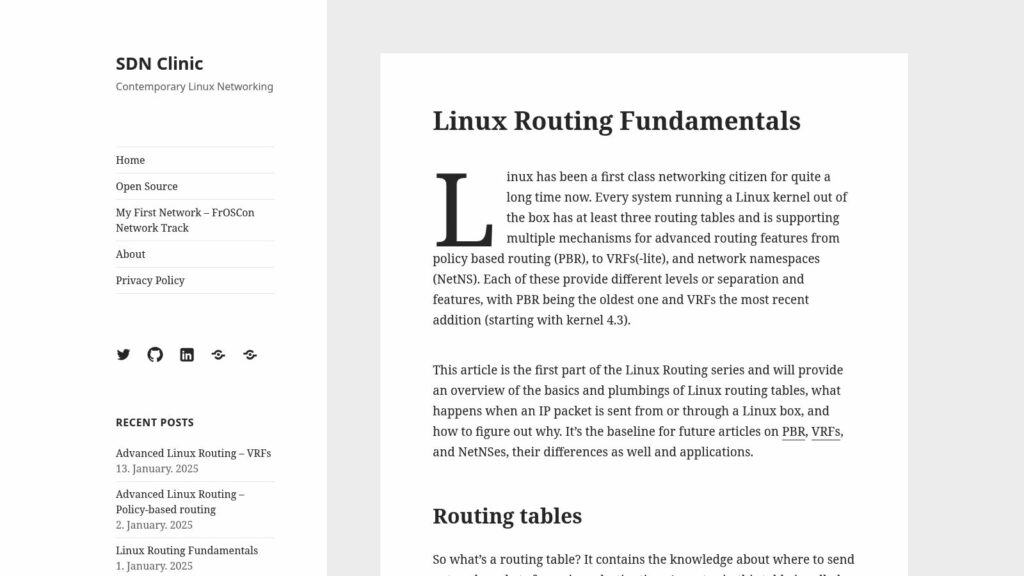Linux networking supports multiple routing tables and advanced features like policy-based routing (PBR), VRFs, and network namespaces. This summary covers basics of routing tables, explaining their structure, routing lookups, source address selection, and special route types. Linux systems come with default tables: local, main, and default, which are checked in sequence for routing decisions. Users interact with routing tables via the ip command. The article also discusses handling ICMP errors and interface link states. Further articles will expand on advanced routing techniques.
Linux Routing Fundamentals

